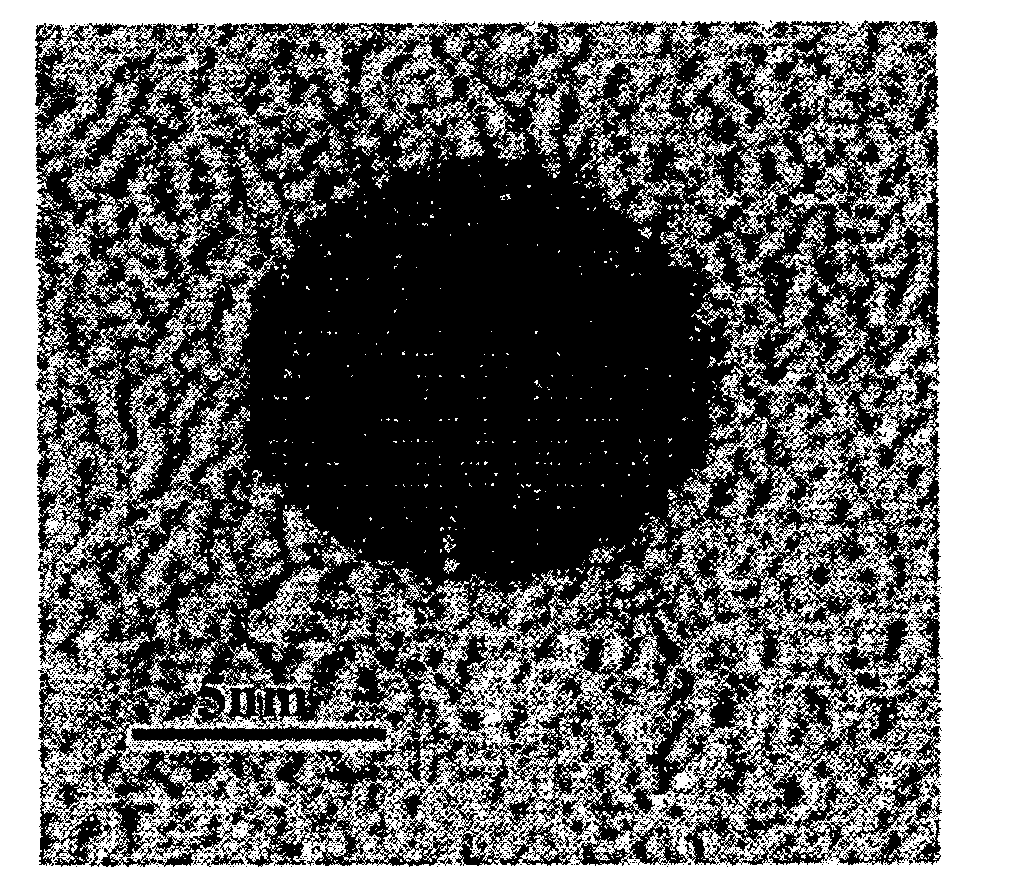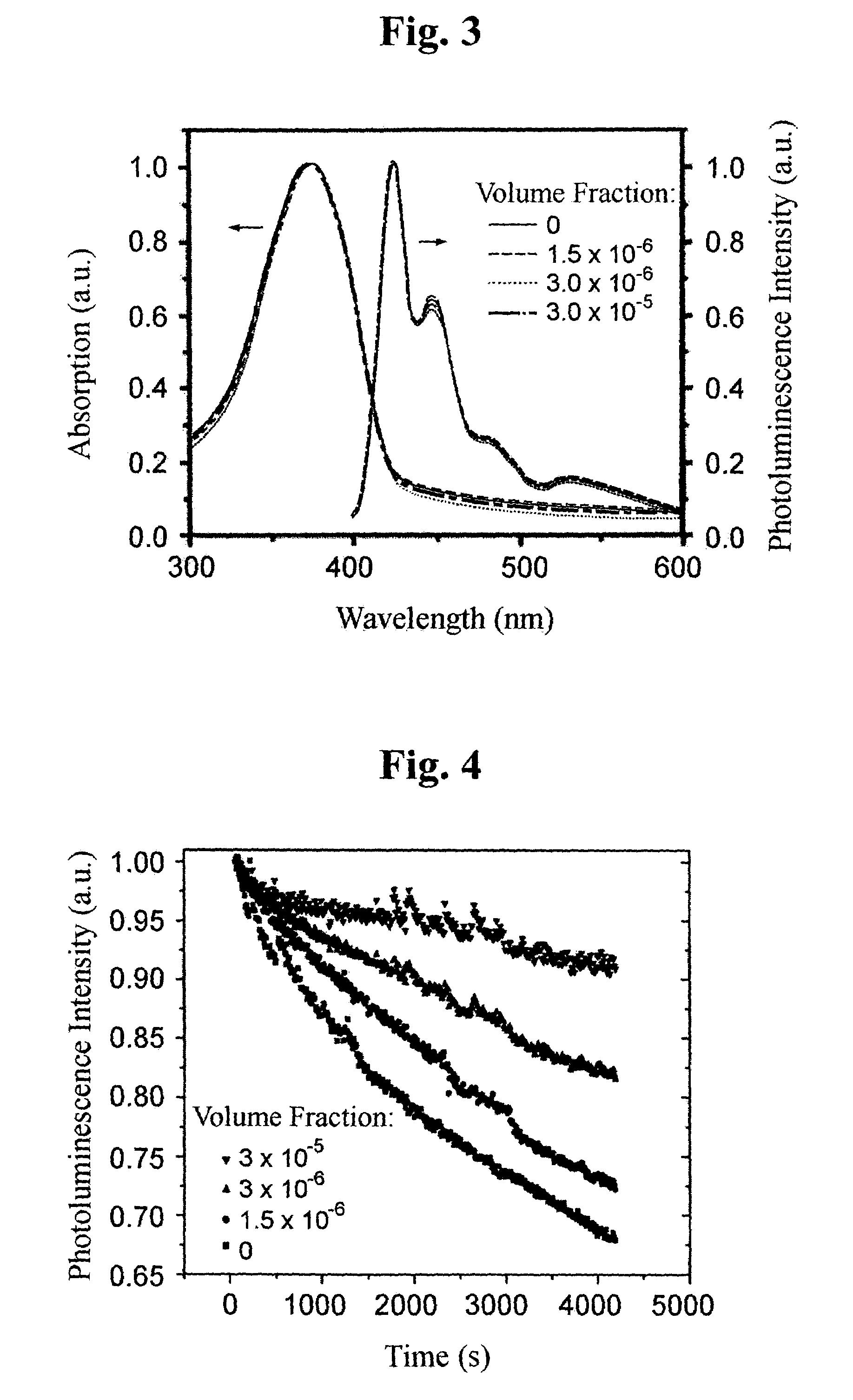Polymeric electroluminescent device using an emitting layer of nanocomposites
- Summary
- Abstract
- Description
- Claims
- Application Information
AI Technical Summary
Benefits of technology
Problems solved by technology
Method used
Image
Examples
Embodiment Construction
[0018]A composite of nanoparticles and a luminescent polymer, nanocomposite, is used as an emitting layer of a polymeric electroluminescent device in accordance with the present invention. Metal nanoparticles such as Au, Ag, Pt, Ni, Fe, Co and Ge, which are on the order of 1–100 nm in size, are mixed with a luminescent polymer such as poly(dihexylfluorene), poly(phenylenevinylene) and poly(dioctylfluorene), which generates light with wavelengths of 400–800 nm, in a volume fraction of 1×10−9 to 0.1. As a result, the metal nanoparticles are in resonance with the triplet excitons of the luminescent polymer and absorb the energy of the triplet excitons. A description is provided below of an embodiment using a nanocomposite, which is a mixture of a blue-light-emitting polymer such as poly(dioctylfluorene) and gold nanoparticles, as an emitting layer of a polymeric electroluminescent device in accordance with the present invention.
[0019]For the formation of gold nanoparticles, a 30 mM aqu...
PUM
| Property | Measurement | Unit |
|---|---|---|
| Size | aaaaa | aaaaa |
| Size | aaaaa | aaaaa |
| Wavelength | aaaaa | aaaaa |
Abstract
Description
Claims
Application Information
 Login to View More
Login to View More - R&D
- Intellectual Property
- Life Sciences
- Materials
- Tech Scout
- Unparalleled Data Quality
- Higher Quality Content
- 60% Fewer Hallucinations
Browse by: Latest US Patents, China's latest patents, Technical Efficacy Thesaurus, Application Domain, Technology Topic, Popular Technical Reports.
© 2025 PatSnap. All rights reserved.Legal|Privacy policy|Modern Slavery Act Transparency Statement|Sitemap|About US| Contact US: help@patsnap.com



